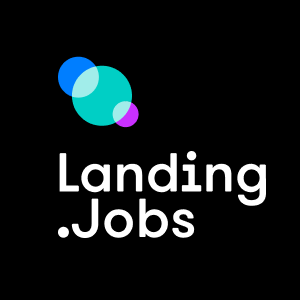Data-driven HR refers to the practice of using data and analytics to guide Human Resources decisions. Rather than relying solely on intuition, experience, or opinion, data-driven HR uses concrete information about employees, processes, and performance to improve decision-making.
These processes involve collecting relevant data and analysing its patterns and trends, making decisions based on this analysis, and measuring the impact, assessing whether tangible results are actually being generated for the company. Data-driven HR transforms Human Resources into a strategic, proactive, and results-oriented area, supported by concrete evidence.
The risks of ignoring a data-driven approach in HR
Although HR is expected to have a measurable impact on business, these teams and their organisations can be limited if they do not adopt a data-driven approach. Despite the growing use of HR technology, many companies still struggle to apply data and its analysis in real-time situations. But the downsides of ignoring data-driven HR far outweigh the discomfort of change:
Missed employee trends: without accurate data, organisations are unable to identify engagement or behaviour patterns before they become significant problems.
Ineffective recruitment: choices made based more on intuition than facts frequently lead to subpar hires, resource waste, and slower growth.
Increased turnover rates: businesses are unable to predict resignations without predictive insights, which causes expensive voids and disruption.
Reduced productivity and satisfaction: disengaged workers produce less value, and the underlying causes are hidden in the absence of data.
Assumption-based decisions undermine HR’s credibility as a strategic partner by introducing bias and inconsistency.
Missed development opportunities: Organisations miss out on developing future leaders internally when they fail to recognise employee potential.
On top of these risks, organisations face structural challenges:
Data integration complexity: unifying information across multiple systems remains difficult, particularly with rising demands for privacy and security. And we already know how important it is to ensure the security of a company.
Hesitation from HR leaders: some leaders remain cautious about investing in analytics, fearing it will be costly or fail to show ROI.
Outdated beliefs and limited resources: perceptions that HR analytics is “nice to have” rather than strategic, still slow adoption in many companies.
The benefits of a data-driven approach
However, the benefits of using a data-driven strategy are obvious. HR teams move from a reactive to a proactive, strategic decision-making process when they employ analytics. They can anticipate, prevent, and improve decisions over time rather than waiting for issues to worsen. HR can reinforce its business impact thanks to this change. A data-driven approach enables:
Improved talent attraction: employing insights to create more intelligent campaigns and draw in applicants with better cultural and skill fits.
Predictive retention strategies: identifying disengagement early and acting before valuable employees leave.
Optimised workforce planning: aligning skills and resources with future organisational needs through data-backed forecasting.
Personalised employee experiences: tailoring development, recognition, and engagement initiatives to individual preferences.
Accurate reward decisions: ensuring fair, competitive compensation strategies grounded in evidence rather than guesswork.
Using data to identify inefficiencies and make quicker strategy adjustments is known as continuous improvement.
Strategic alignment is the process of directly connecting HR initiatives to business objectives and demonstrating quantifiable effects at the executive level.
In short, not applying a data-driven approach in human resources teams can weaken both the results of the company’s people and the organisation’s performance itself. On the other hand, adopting them transforms HR into an engine of organisational growth.
How to implement data-driven HR effectively
A well-defined plan, the acquisition of appropriate skills, and a change in mindset towards evidence-based decision-making are all necessary to transform an HR into a data-driven team. Organisations must concentrate on a few crucial steps to successfully implement data-driven HR:
Establish clear goals: begin by determining the purpose of your analytics efforts. Decide if you want to increase employee engagement, lower turnover, or improve recruitment. Having specific goals guarantees that data collection and analysis are motivated and in line with corporate priorities.
Identify relevant data sources: from performance reviews to recruitment funnel data, determine which HR metrics and sources are most helpful. Procedures should be established to guarantee reliable and high-quality collection. To increase expertise, work with professionals in web analytics or business intelligence whenever you can.
Invest in the right tools and technology: Selecting systems that integrate with current HR procedures is crucial. Invest in the appropriate technology and tools by choosing platforms that facilitate the effective collection, storage, and analysis of data.
Develop analytical skills: HR teams do not need to be data scientists, but they must be comfortable with basic analytics and interpretation. Training these skills helps professionals to question results, extract insights, and translate them into actionable strategies. Cross-functional collaboration with IT, finance, and business teams strengthens insights across the organisation.
Ensure data privacy and security: protecting sensitive employee information is a top priority. Ensuring compliance builds trust and safeguards against reputational or financial risk.
Create space for experimentation: analytics is an iterative process. Pilot projects and controlled experiments enable organisations to test new approaches, learn from results, and decide what works. This test-and-learn culture reduces resistance to change. Regularly review outcomes, identify patterns, and adjust strategies accordingly.
Businesses can realise the full potential of data analytics by establishing clear objectives, equipping HR professionals with the necessary skills, and encouraging evidence-based decision-making throughout the organisation.
Practical tips for implementing data-driven HR
Practical strategies help HR teams move from theory to tangible impact, ensuring that analytics drives real improvements in workforce planning, engagement, and performance:
Start with a clear objective: as we already suggested, define specific goals, such as reducing turnover, improving engagement, or optimising recruitment. Clear objectives guide data collection and ensure analysis supports business priorities.
Focus on quality over quantity: prioritise accurate, relevant data rather than collecting everything. Capturing unnecessary information can slow decision-making and hide actionable insights.
Use predictive analytics: leverage machine learning and forecasting tools to anticipate trends or potential issues in your workforce. Always be mindful of algorithmic bias and ensure predictions are interpreted alongside human judgment.
Combine quantitative and qualitative data: qualitative feedback from employees provides context, helping to understand the “why” behind the metrics. Also, short, frequent surveys can help capture real-time employee feedback, enabling rapid responses to engagement or satisfaction issues.
Visualise your data: charts, dashboards, and graphs make complex information accessible to stakeholders. Clear visualisation helps leaders make informed decisions quickly.
Collaborate across departments: working closely with IT, finance, and other teams ensures data analysis is holistic and insights reflect the full business context.
Benchmark against industry standards: compare HR metrics with similar organisations to identify strengths, weaknesses, and opportunities for improvement.
Implement A/B testing: experiment with different HR strategies and use data to determine which approaches deliver the best results. Testing promotes learning and reduces reliance on assumptions.
A new data-driven culture
HR professionals can improve the experience of the company and its employees, make more informed decisions, and produce measurable results by adopting data analysis. This process emphasises how finding a balance between technology and human experience can be beneficial for organisational success.






0 Comments